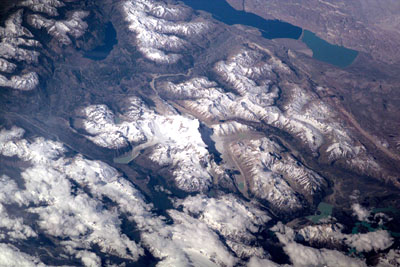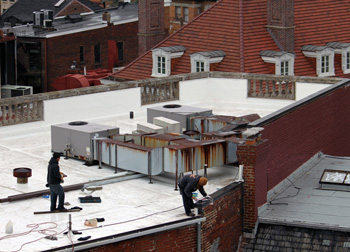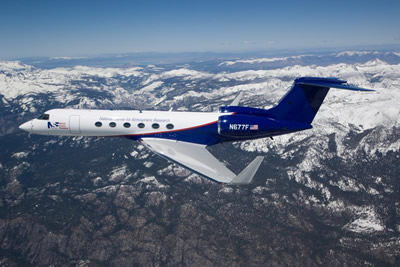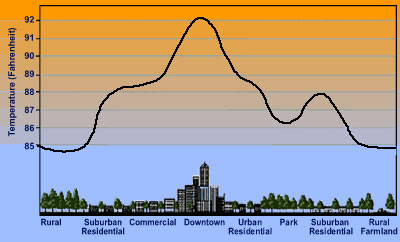This cross section through a typical city shows how temperatures are usually lower at the urban-rural border than in dense downtown areas.
Click on image for full size
Lisa Gardiner / Windows to the Universe, based on a figure from the Lawrence Berkeley National Laboratory
The Urban Heat Island Effect
It often feels a bit warmer in a city than it does in a nearby rural area. This is called the urban heat island effect.
What makes cities warmer? Urban heat islands form because the buildings, roads, and parking lots in cities hold onto heat more than natural places full of trees and other plants. Trees shade the ground, preventing the Sun’s energy from being absorbed. Without them, the ground surface heats up. Cars and trucks make heat from their engines and exhaust, which adds to the heat island effect.
An urban heat island can make a heat wave hotter and last longer in a city. City heat can influence the weather too - changing winds, clouds, and rain.
Today, many cities are making an effort to combat the urban heat island effect. White or reflective materials are being used for roofing and roads. Trees are being planted along city streets. And, in many areas, green roofs - living plants on rooftops – are being installed.
Last modified July 15, 2009 by Lisa Gardiner.
You might also be interested in:

Wind is moving air. Warm air rises, and cool air comes in to take its place. This movement creates the winds around the globe. Winds move at different speeds and have different names based on their speed.
...more
This picture was taken from high above our planet. Looking at the Earth from very far away like this we can see that some parts of our planet look light in color, and some parts look dark. The color of
...more
Cities are affected more by global warming than rural areas. Roads, dark roofs and other surfaces in cities hold onto heat from the Sun. This creates an urban heat island effect that can raise the temperature
...more
Rainbows appear in the sky when there is bright sunlight and rain. Sunlight is known as visible or white light and is actually a mixture of colors. The sun's rays pass through millions of raindrops. A
...more
It takes the Earth one year to travel around the sun one time. During this year, there are four seasons: summer, autumn, winter, and spring. Each season depends on the amount of sunlight reaching the
...more
Scientists sometimes travel in airplanes that carry weather instruments in order to gather data about the atmosphere. These research aircraft bring air from the outside into the plane so scientists can
...more
An anemometer is a weather instrument used to measure the wind (it can also be called a wind gauge). These instruments can be used in a backyard weather station or on a well-equipped scientific research
...more















